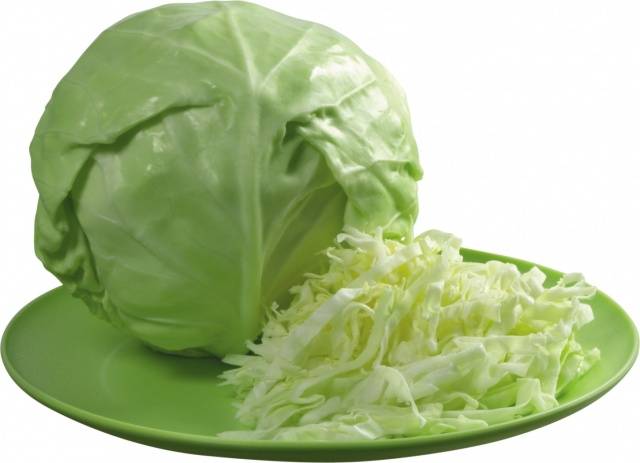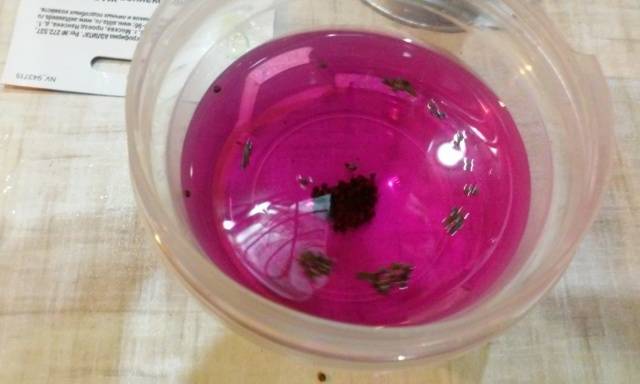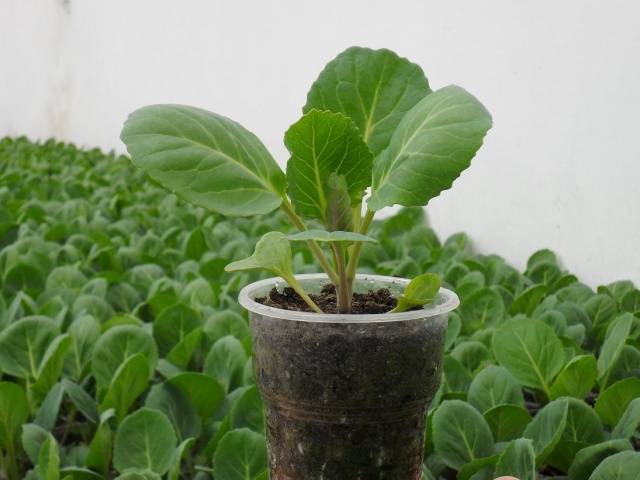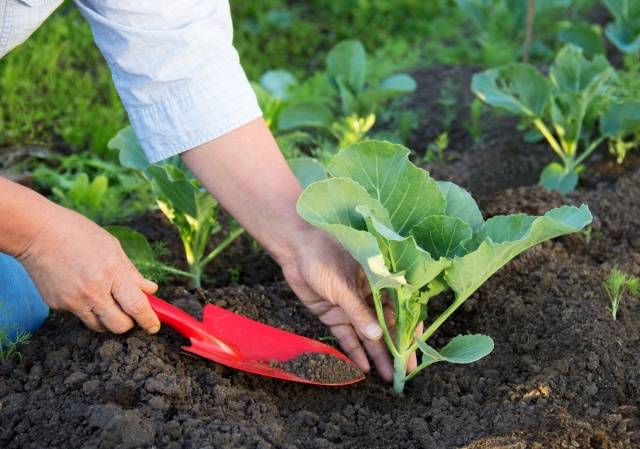Content
Many novice farmers are faced with the fact that cabbage seedlings, which appeared quite successfully, subsequently dies. To learn how to grow cabbage seedlings at home, read the article, and if you follow all the recommendations, you will get a good harvest of this healthy vegetable.
Growing a large yield of cabbage depends on the following conditions:
- Seed qualities
- Land preparation for planting
- Fertilizers for cabbage
- Proper care of seedlings: germination, picking, planting in the ground, measures to prevent or combat diseases and pests, weeding, watering, cleaning.
Sowing preparation
To get healthy seedlings, you should properly prepare for planting: choose seeds, decide on the sowing date, prepare the soil and containers.
The choice of planting material
The choice of seeds for seedlings depends on the following factors:
- Desired time of harvest: the choice of the variety depends on this - early ripening, mid-ripening or late.
- The planned quantity and size of the harvest.
- The climatic conditions where the vegetable will be grown: the selected seed variety must correspond to them.
Cabbage, if you follow certain rules, can be stored until the spring of next year (until May). The vegetable is great for pickling. Therefore, it will not hurt to purchase large quantities of cabbage seeds of late varieties.
Getting a rich harvest depends on the quality of the seeds, therefore it is important to correctly select them.
It is recommended to buy seeds with a stock, as some may not sprout or die while growing. If you choose a variety for planting that you have not bought before, do not purchase a large amount. Better to take a little bit of different varieties.
It is advisable to buy seeds in the store: this way you will know exactly the expiration date, growing conditions and the variety of cabbage. It should be remembered that the closer the date to the expiration date, the lower the percentage of seed germination. Cabbage seeds retain their quality for 5 years after harvest. If you buy seeds "from hand", there is a high risk of getting seedlings, which will transmit the diseases of the parent cabbage.
Purchased seeds should be stored at a temperature of +5 degrees and 60% humidity.
Duration of planting seeds for seedlings
The timing of planting seeds for seedlings depends on the variety of vegetables and the climate of the region. Vegetable sprouts appear within 12 days from the moment of planting, 45 days after germination, the cabbage is transplanted into the ground. Thus, the cultivation of cabbage through seedlings should be started approximately 2 months after the planned date of its planting in the ground.
Preparing material for planting
Before preparing seeds, it is necessary to remove from the total amount those unsuitable for planting: defective or very small ones. To check the remaining material for germination, you can plant them for a test.A check is done at least 2 weeks before the start of the sowing season: you need to take several seeds and plant them in the ground. As a result, you will know for sure whether or not you will receive seedlings, and how many days it takes for the process of germination to appear (this information will be useful for determining the timing of planting seeds).
Also, seeds can be pre-germinated in order to plant exactly high-quality material in containers. To do this, place the seeds in a damp cloth or gauze. In this case, you need to ensure that the future seedlings are not in one place - it is necessary to distribute the seeds separately from each other. The fabric must be placed in a container and removed in a semi-dark place with an air temperature within +25 degrees. Until the seeds germinate, it is necessary to control the moisture content of the tissue - add water as needed. The sprouts usually appear within 5 days.
To prevent fungal infections, it is recommended to pickle the seeds, unless the annotation indicates that the material has already been treated accordingly. To do this, they must be placed in gauze or other fabric, and immersed for 20 minutes in a 2% solution of potassium permanganate. After the procedure, the seeds must be rinsed.
To stimulate germination, planting material is immersed in a nutrient liquid for half the time of the day: one teaspoon of fertilizer per liter of water. After the time has elapsed, the material is washed and left for a day at a temperature of +2 degrees.
Before you start growing cabbage seedlings at home, it is advisable to harden the seeds. To do this, it is necessary to place the material in hot water (+50 degrees) for a quarter of an hour, then lower it into cold water for 60 seconds.
Preparing the land for sowing
Peat is suitable for growing cabbage. Ideally, if it will:
- humidity not higher than 60%;
- with a low degree of decomposition;
- riding;
- with a pH level of not more than 6.5.
High salt content in peat or its low acidity can lead to poor root formation of cabbage seedlings.
If not high-moor peat is used for seedlings, one sawdust should be added to its three parts.
Before use, it is recommended to steam the peat to disinfect it.
How to grow cabbage seedlings at home so that they are strong? It is necessary to add top dressing to the peat. It is better to use the universal, smallest, complex fertilizer.
Preparing containers for growing cabbage
There are many types of containers in which cabbage is grown. For the positive and negative aspects of each, see the table:
Container for cabbage seedlings | Positive sides | Negative sides |
|---|---|---|
Pots |
| Individual for one seed, therefore take up a lot of space |
Boxes | Space saving due to the fact that several seeds are placed in one container
| When transplanting into the ground, there is a high risk of damaging the roots. |
Containers with which the seedlings are planted in the ground (peat: pots, cassettes, tablets) |
|
|
Cassettes |
| Individual for one seed, therefore take up a lot of space |
"Snails" |
| Some skill is needed to form a container in the form of a "snail" |
Materials at hand (plastic bags, cups and boxes for juices, dairy products, etc., bottles, newspaper, eggshells, etc.) | No financial costs required | When transplanting into soil, there is a risk of damaging the roots |
Sowing cabbage seeds
Consider two popular sowing methods: growing cabbage seedlings in cassettes and in snails.
Cassette cabbage cultivation
The cassettes must be filled with earth, not reaching 3 mm to the upper edge, so that the roots of the seedlings cannot grow into an adjacent cell. In the center, you need to make a 3 mm depression in which to put the seed. One cell is for one plant.
Until the sprouts appear (about two days), the cassettes must be kept in a room with a humidity of at least 80% and a temperature of +20 degrees. If the seedlings are kept under the same conditions, after the seedlings appear, they can stretch out, which will negatively affect the quality.
It is better to install cassettes themselves on frames in order to provide air ventilation under the cells.
Sowing cabbage seeds in "snails"
Recently, the method of sowing seeds for seedlings in "snails" is very popular. This is not surprising, because this method significantly saves space: in one "snail" you can grow up to 15 seedlings, and its diameter corresponds to the size of one medium pot. Soil for the formation of a "snail" is consumed by an order of magnitude less than when planting each seed in a separate container. It is easy to care for seedlings in "snails".
Materials for planting cabbage seeds in the "snail"
To form a "snail" you will need:
- Laminate underlay 2 mm thick. The length is calculated from the planned amount of planting material (about 10 cm per seed, 10 cm must be added to this length), the width is 10-13 cm. The substrate is sold in building materials stores, it can be purchased in a roll or in a separate cut.
- Priming.
- A container with water.
- Syringe.
- Rubber roller (you can exclude this item).
- Plastic transparent bags.
- Pallets.
- Wide tape, scissors, marker, spoon, spatula.
How to form a "snail"
To form a "snail" follow these steps:
- Prepare the soil: transfer it to a container from which it will be convenient to fill the "snail" (for example, into a basin); remove the trash; break up large pieces.
- Prepare the material for planting: put in a container where the seeds are clearly visible and from which it will be convenient to take them (for example, in a white saucer).
- Cut a strip of laminate backing to the desired length and width, and lay it on a table or floor. It is better to lay a newspaper underneath, so that it is more convenient to clean up the remains of the earth.
- Using a spatula, you need to pour soil onto the substrate, leaving 3 cm of empty space from the beginning, end and from one edge. The earth needs to be lightly tamped with a roller (or in another way). The width of the soil layer after leveling should be approximately 3 cm.
- Fold the part of the substrate without earth in half, left at the beginning, and begin to twist all the material inward as tightly as possible. To prevent the "snail" from disintegrating, it must be secured with at least two strips of adhesive tape. Place the snail in an appropriately sized pallet. Above should be the part that is not completely filled with earth. If you do not have the required pallet, you can put the snail in a transparent plastic bag.
- Use a marker to write the variety of cabbage and the date of disembarkation on the substrate. You can not write, but attach a bag from under the seeds with tape.
- Use a syringe to sprinkle moderately warm water over the soil.
- Spread the seeds on the ground 10 cm apart.
- Gently moisten the seeds with a syringe. This must be done carefully so as not to wash off the small cabbage seeds.
- Spoon the soil over the seeds with a spoon. Do not water to avoid adding weight to the top layer.
- Cover the snail with a transparent plastic bag and place in a place where there is little light and enough heat.
- Before sprouting, air and water future seedlings once a day.
- As soon as the seedlings appear, the bag must be removed, and the "snail" must be placed where the seedlings will be grown.
- Water the sprouts with a syringe with warm water as needed.
Seedling care
Proper care of cabbage seedlings implies proper watering, feeding and temperature control.
Watering
The water for irrigating seedlings should not be too hard, since salts may remain on the surface of the soil, which will interfere with the penetration of air. To make the liquid softer, it must be defended. It is ideal to use melt water for irrigation, which you can prepare yourself or melt snow or ice in winter (provided that you live outside the city, away from roads).
Watering should be done in moderation: do not allow water to seep through the bottom, but also do not leave the ground semi-dry. It is ideal to use about 4 ml of water per watering. The required temperature of the liquid for irrigation is room temperature. The frequency of watering depends on the state of soil moisture; it happens that the seedlings do not need liquid for up to 2 days.
Temperature range for seedlings
In order for cabbage seedlings to be strong at home, it is necessary to maintain the air temperature within 8-15 degrees Celsius. Also, there should be no sharp fluctuations in day and night temperatures.
Top dressing
You need to start feeding immediately after the first watering. During the heat, in order to avoid burning the seedlings, after fertilization, the soil must be additionally watered with 1 ml of liquid. Feed seedlings follows twice every 7 days. If cabbage growth needs to be halted, the frequency of feeding should be reduced to once a week or two, or stopped altogether.
Errors when growing cabbage, see the video:
What to do if there is no way to transplant seedlings into the ground in time
It is advisable to transplant cabbage seedlings into the ground at a certain time. However, there are situations when plants are ready for transplanting, but weather conditions, soil conditions or other factors do not allow this.
Seedlings can be kept in the condition necessary for transplanting by placing them in a cool room and following the following recommendations:
- The air temperature in the storage area should not be below +1 and above +3 degrees.
- The room should have 90% humidity.
- Seedlings should be placed vertically in a container.
- The ground should be slightly damp.
In this way, seedlings can be stored for no more than 3 weeks.
Preparing seedlings for transplanting into the ground
Before planting cabbage in the ground, it should be hardened. To do this, 10 days before the planned transplant, you need to take out the container with plants to fresh air. The amount of time spent by seedlings under realistic conditions should be gradually increased to 2-3 hours per day.
How to harden cabbage seedlings, see the video:
Helpful information
The best predecessors for growing cabbage:
- carrot;
- cereals;
- melons;
- nightshade;
- bow.
Crops after which it is not recommended to plant cabbage:
- cabbage (earlier than four years later);
- sunflower;
- mustard;
- beet;
- corn;
- rape.
Conclusion
Growing cabbage seedlings at home is complicated by the fact that it needs a special temperature regime. Despite some difficulties, you can grow strong seedlings, provided that all planting and care requirements are met.















